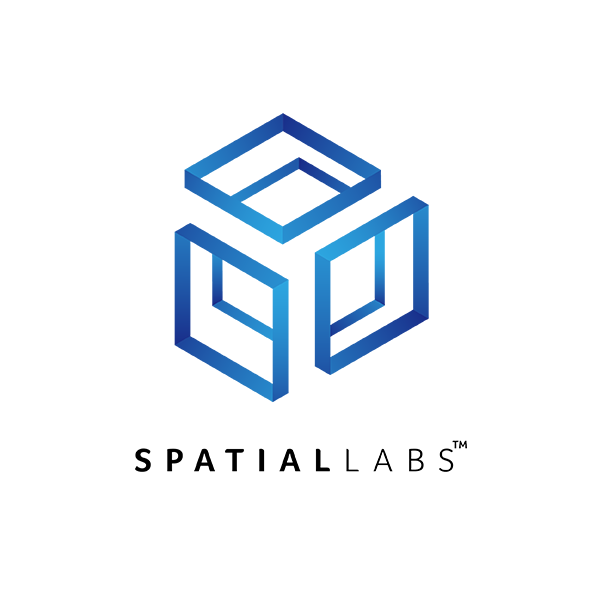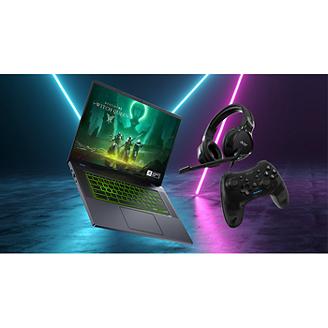-
How to Fix a Slow Windows 11 Computer
We’ve all been there, the sad moment when our beloved computer that was still pretty new not so long ago starts to slow down. A slow PC can cause us all sorts of problems, from missed deadlines to sadness, frustration, anger, and even computer rage. But before a slow running computer causes you any more issues, how about we take a step back and figure out what’s causing the drop in performance? Once you know what the issue is, then it’ll be easier to decide upon how to fix a slow computer.
So, if you are wondering why is Windows 11 so slow? Or simply want to find out why your computer’s running slow, then you’re in the right place. Today we’re going to furnish you with several key pieces of information to help you return to high speed computing. First we’ll explain why computers slow down with the passing of time, and then provide you with 10 useful ways to sort these issues.
Why is my computer so slow?
Depending on your age, you may or may not have discovered that as things age, they tend to slow down. While an aging computer won’t usually have the same appeal as an antique piece of furniture, or musical instrument, it's perfectly possible to keep your PC running, if you take good care of it. So if your PC is slightly over the hill, what’s behind this slowing down? Firstly let’s consider the hardware under the hood of old faithful. While Windows 11 was only released back in October 2021, in computer technology three plus years is actually quite a long time. Let’s take a look at five of the usual suspects behind your slow-running PC:
* Hard drives, especially traditional (non SSD) spinning hard drives can actually become fragmented over time, meaning that it takes the system longer to access your files and applications.
* If your drivers aren’t regularly updated, then your hardware components won't be functioning at their best, resulting in sub-par overall system performance.
* Accumulation of temp files can consume serious disk space and slow your system down. Without cleaning, these temporary files can build up like dust and dead flies on a mantelpiece, taking up space that wasn’t intended for them!
* Too many background applications that automatically launch every time you turn on your PC cause multiple background processes, consuming system reduces and slowing down your computer.
* Like rabies lying dormant in a dog, viruses and malware may be hiding in old faithful, running background processes that consume resources, resulting in sluggish performance.
It’s perfectly possible that your PC is blighted by more than one of these five horsemen of the slow PC apocalypse. So if you’re still wondering “Why is my Windows 11 so slow?” Then read on to discover ten recommended approaches to fix the pesky problem of a slow Windows 11 PC.
How to Fix a Slow Windows 11 Computer?
1. Check for system updates. Let’s start with this simple, yet often overlooked solution to a slow Windows 11 computer. While Windows 11 automatically downloads and installs updates, if you wish to take matters into your own hands, simply:
* Click Start
* Select Settings
* Select Windows Update
* Select Check for updates
* Select Download & install
2. Disable unnecessary startup programs. When you startup, all kinds of programs automatically launch, eating up valuable system resources. This leads to slower boot time and reduced efficiency. Review and adjust your startup applications as follows:
* Click Start
* Select Settings
* Select Apps
* Click Startup
* Toggle unnecessary apps to Off
3. Uninstall or disable unnecessary apps and bloatware. Beware of bloating! Bloatware and unnecessary apps can slow you right down, so get rid of unneeded and unwanted software that came pre-installed on your PC. To shed the bloat:
* Click Start
* Select Settings
* Select Apps
* Go to Installed apps
* Browse through the apps and click on the three dots for apps you want to delete.
* Select Uninstall
* Follow the prompts to complete the uninstallation process
4. Clean up disk space and remove temporary files. Reducing clutter can massively improve the performance of your Windows 11 computer. Temporary files gather over the years from web browsing, system updates, and application installations. These files take up disk space and can lead to fragmentation. Out with the old, in with the new:
* Type Disk Cleanup in the search bar
* Select Disk Cleanup from the results
* Select drive (C:), click OK
* Select files to delete, click OK
* To confirm, click Delete Files
5. Optimize your power settings. Balancing system responsiveness and power consumption can be like walking a tightrope. Depending on what you use your PC for, you may want high performance for speedy operations, or power saving mode if you’re ok with sluggishness. To optimize your power settings:
* Click Start
* Select Settings
* Navigate to System > Power & battery
* In Power mode section, choose from Best performance, Best power efficiency, or Balanced
6. Adjust visual effects. The automatically enhanced visual experience provided by Windows 11 actually puts great pressure on system resources. By disabling or minimizing visual effects your CPU and GPU will respond faster. To put essential tasks first, and graphics second:
* Click Start
* Select Settings
* Navigate to Visual Effects
* Turn off Animation effects and/or Transparency effects
7. Scan for virus and malware. Beware of foxes in the henhouse and cows out in the corn, or the viruses and malware lurking in old faithful. Like a dental checkup, regular virus scanning can stop the rot before it sets in. Keep protected:
* Click Start, select Settings
* Navigate to Privacy & security > Windows Security
* Click Open Windows Security
* Select Virus & threat protection
* In the Current threats section, click Quick scan
After the scan completes, Windows Security will display the results. If threats are detected, follow the recommended actions to remove or quarantine them. If you run other antivirus software, follow appropriate instructions.
8. Consider upgrading your parts (RAM, SSD, CPU). Depending on the age of your device, and the purpose of your computer, upgrading the RAM (your PC’s short-term memory), SSD (storage), and CPU (brains of the device) can all contribute to faster performance in your Windows 11 computer. Here’s a guide if you’re curious about how to upgrade your RAM.
9. Check and restart your router. An old favorite, check how your router is performing, and then restart it. This step is especially helpful if internet dependent applications are running slow: fix the Wi-Fi issues, and the problem is solved!
10. Restart your computer. Finally, the classic switch it off and see technique. Sometimes we just need a good night’s rest to see things more clearly. PCs, too, may need a moment of shuteye. So restart your computer, and there’s a chance that the sluggishness will be replaced by the cheetah-like speed you once knew.
A slow start, but a solid finish
We hope that you’ve enjoyed learning ways to fix a slow Windows 11 Computer. If you’re still struggling with sluggish speeds, follow the ten steps listed above, and hopefully one or more of them will provide a solution to your PCs slowness. Good luck!
Recommended Products
Swift 14 AI (Intel)
Buy Now
Swift 14 AI (AMD)
Buy Now
-
What is GDDR7 Memory? Exploring the Latest NVIDIA 50-Series GPU Technology
What is GDDR?
Graphics Double Data Rate (GDDR) is a special type of memory designed for high-performance devices like graphics cards, gaming consoles, and advanced computers. Unlike regular memory used in everyday computers, GDDR is built to handle the massive amount of data needed for graphics, making it faster and more efficient.
GDDR stands out because it can quickly transfer large amounts of data, allowing GPUs to process textures, shapes, and lighting for smooth, high-quality visuals. It achieves this with wider connections that move data faster between the GPU and memory. Despite its speed, GDDR is energy-efficient, helping to manage heat and power use. It's also optimized for the kind of multitasking required in gaming, 3D rendering, and AI, making it essential for modern graphical performance.
The importance of GDDR in GPUs cannot be overstated. GPUs rely on GDDR to ensure they have fast and consistent access to the massive amounts of data required to render complex scenes, run high-resolution games, and execute AI-driven computations. Without GDDR, GPUs would struggle to meet the performance demands of modern applications, from immersive gaming to professional creative tasks and cutting-edge AI research.
Evolution of GDDR
GDDR has undergone several iterations, with each generation improving speed, bandwidth, and efficiency:
* GDDR3: Introduced in the early 2000s, GDDR3 was widely adopted in gaming consoles like the Xbox 360 and PlayStation 3, as well as GPUs of the era. It provided a significant improvement in memory bandwidth over its predecessor, DDR2, enabling better performance in gaming and graphical applications. However, its capabilities were eventually outpaced by more advanced generations.
* GDDR5: Released in 2008, GDDR5 became the standard for high-end GPUs, offering substantial improvements in bandwidth and power efficiency compared to GDDR3. It was widely adopted in GPUs for gaming and professional applications, such as NVIDIA's GTX 500 and 600 series, due to its ability to handle increasingly demanding graphical workloads.
* GDDR6: Debuting in 2018, GDDR6 further advanced memory performance by doubling the bandwidth of GDDR5 while maintaining excellent energy efficiency. It became the backbone of modern GPUs, such as NVIDIA's RTX 20 series and AMD's Radeon RX 5000 series, enabling features like real-time ray tracing and supporting higher resolutions in gaming and professional applications.
* GDDR6X: An enhanced version of GDDR6, it introduced PAM-4 signaling (Pulse Amplitude Modulation) to achieve even higher data rates. GDDR6X is capable of transferring more data per clock cycle compared to GDDR6, making it a key choice for NVIDIA’s high-end GPUs, including the RTX 30 series and RTX 40 series.
* GDDR7: The latest generation, offering groundbreaking performance improvements, including higher bandwidth per pin, reduced thermal resistance, and advanced signaling techniques like PAM-3.
What is GDDR7?
GDDR7 (Graphics Double Data Rate 7) is the latest and most advanced generation of GDDR memory, designed to deliver unprecedented performance in high-end GPUs, gaming consoles, and professional computing systems. Announced by Samsung in 2022 and formalized by JEDEC in 2024, GDDR7 represents a significant leap forward over its predecessors, including GDDR6 and GDDR6X, with key innovations in bandwidth, efficiency, and reliability.
Key features and advantages of GDDR7
* Unprecedented Bandwidth and Speed: GDDR7 sets a new benchmark for memory performance, starting with an impressive base speed of 32 GT/s (gigatransfers per second) per pin—60% higher than the fastest GDDR6 and 33% faster than GDDR6X. Future iterations are expected to achieve speeds up to 40 GT/s, with plans for even higher rates in subsequent years. This substantial increase in bandwidth allows GPUs to handle ultra-high resolutions, complex textures, and real-time ray tracing with ease, enabling smoother gameplay and improved visual fidelity.
* Enhanced Efficiency with PAM3 Signaling: One of the most revolutionary features of GDDR7 is its use of PAM3 (Pulse Amplitude Modulation 3-level) signaling, which replaces the NRZ signaling of GDDR6 and the PAM4 of GDDR6X. PAM3 strikes a balance between efficiency and complexity, enabling higher data transfer rates while consuming less power than PAM4. This makes GDDR7 not only faster but also more energy-efficient, a critical factor for modern GPUs operating under stringent thermal constraints.
* Lower Power Consumption: GDDR7 operates at a reduced voltage compared to its predecessors, starting at 1.2V and potentially as low as 1.1V for lower-clocked variants. This reduction in power requirements helps to offset the increased energy demands of higher bandwidth, allowing for better thermal management and more efficient operation in both desktops and laptops.
* Improved Reliability and Error Correction: Another standout feature of GDDR7 is its built-in ECC (Error Correction Code) capabilities. ECC improves data integrity by detecting and correcting minor errors during data transfers, which is essential for maintaining system stability in high-performance applications like gaming, AI, and professional rendering.
* Increased Memory Density: GDDR7 introduces support for non-power-of-two memory configurations, enabling higher memory capacities without increasing physical space requirements. For example, a 128-bit GPU equipped with GDDR7 can now feature 12GB of VRAM instead of the traditional 8GB, providing more headroom for demanding workloads.
How will GDDR7 make the RTX 50-Series better than the RTX 40-Series?
The transition from GDDR6X to GDDR7 is a pivotal factor that elevates NVIDIA's RTX 50-series GPUs above the RTX 40-series. While GDDR6X was a major leap in memory technology, GDDR7 offers even greater advancements in speed, efficiency, and overall performance. Here's how this new technology gives the RTX 50-series an edge:
1. Unmatched Bandwidth for High-Resolution Gaming
The RTX 50-series GPUs leverage GDDR7’s 32 GT/s base speed, which significantly surpasses the 24 GT/s maximum achieved by GDDR6X. This increase in bandwidth allows the RTX 50-series to handle the most demanding gaming scenarios, including 4K and 8K resolutions, with higher frame rates and better stability. Gamers can expect smoother gameplay and more responsive visuals, even with ray tracing and other resource-intensive features enabled.
2. Enhanced Ray Tracing and Neural Rendering
GDDR7’s increased memory speed and bandwidth perfectly complement NVIDIA's Blackwell architecture and DLSS 4 technology. With twice the ray-triangle intersection rate and the introduction of neural shaders in the 50-series GPUs, GDDR7 ensures that these innovations operate at peak efficiency, delivering groundbreaking levels of graphical fidelity. RTX 50-series GPUs can render highly complex scenes faster and more accurately than their 40-series counterparts, providing a more immersive gaming experience.
3. Power Efficiency and Thermal Management
While GDDR6X operates at higher voltages, GDDR7 reduces power consumption with a base operating voltage of 1.2V, making the RTX 50-series GPUs more energy-efficient. This translates to lower thermal output, enabling quieter and cooler GPU operation even under heavy workloads. This improvement is particularly beneficial for gaming laptops in the RTX 50-series, which now boast up to 40% better battery life than previous generations.
4. Larger Memory Capacities
The increased memory density offered by GDDR7 enables the RTX 50-series GPUs to pack more VRAM without increasing the physical size of memory chips. For instance, the RTX 5090 features 32GB of GDDR7 memory, compared to the RTX 4090's 24GB of GDDR6X. This expanded VRAM capacity allows the 50-series GPUs to handle more complex textures, larger datasets, and advanced AI models, making them ideal for creators and researchers working on demanding projects.
5. Improved AI and Generative Workflows
GDDR7 plays a crucial role in accelerating AI-driven applications and generative workflows on the RTX 50-series. With support for FP4 (Floating Point 4) precision processing, which uses less memory while maintaining high accuracy, GDDR7 helps reduce latency and improve throughput in tasks like image generation and AI model inference. Compared to the 40-series, which relies on FP16, the 50-series delivers up to twice the speed in generative AI applications, making it a powerhouse for AI developers and content creators.
6. Future-Proofing
The combination of GDDR7's advanced signaling techniques (PAM3), higher clock speeds, and support for next-generation interfaces like PCIe Gen5 and DisplayPort 2.1 ensures that the RTX 50-series GPUs are ready for future gaming and content creation demands. These enhancements make the 50-series not just a step forward but a long-term investment in cutting-edge technology.
By incorporating GDDR7, the RTX 50-series redefines what’s possible in gaming, AI, and creative workloads. From unmatched performance to groundbreaking efficiency, this new memory technology cements NVIDIA’s 50-series GPUs as the ultimate choice for those who demand the best.
GDDR7's role in the future of graphics technology
As gaming, AI, and professional computing continue to demand higher performance, GDDR7 is poised to become the backbone of next-generation GPUs. Its advanced features and improved efficiency set the stage for innovations in graphical fidelity, interactivity, and computational power. With GDDR7 leading the charge, the future of high-performance computing has never looked more promising.
Recommended Products
Nitro 60
Buy Now
Orion 5000
Buy Now
-
What is an AIO Cooler, and Should You Get One for Your PC Build?
Introduction to AIO Coolers
Building or upgrading a PC requires choosing the right cooling solution to ensure optimal performance and the longevity of your components. Among the available options, All-In-One (AIO) coolers are becoming increasingly popular with gamers and PC enthusiasts for their efficiency and sleek aesthetics. But what exactly is an AIO cooler, and why might it be the right choice for your next PC build?
An AIO cooler is a liquid cooling system that integrates all the necessary components into a single, user-friendly package. Unlike traditional air coolers that rely solely on heatsinks and fans, AIO coolers use liquid coolant to transfer heat away from the CPU, offering superior thermal management. In this guide, we’ll break down how AIO coolers work, their benefits and drawbacks, and how to decide if one is right for you.
How an AIO Cooler Works
To understand why many PC builders favor AIO coolers, it helps to know how they operate. A typical AIO cooler consists of several key components:
* Water Block: Mounted directly onto the CPU, the water block contains microchannels through which the coolant flows, absorbing heat from the processor.
* Pump: The pump circulates coolant through the system, moving it from the water block to the radiator and back. This ensures continuous cooling and prevents overheating.
* Radiator: The radiator dissipates heat from the coolant, allowing it to cool down before it cycles back to the water block. It’s equipped with one or more fans to enhance heat dissipation.
* Fans: Attached to the radiator, these fans push or pull air through the radiator fins, improving airflow and cooling efficiency.
Here’s how the system works in practice:
* The CPU generates heat during operation.
* The heat is absorbed by the water block and transferred to the liquid coolant.
* The pump circulates the heated coolant through the tubes to the radiator.
* The radiator releases the heat into the surrounding air, aided by the fans.
* The cooled liquid then cycles back to the water block, repeating the process.
This efficient heat transfer method typically results in lower CPU temperatures compared to traditional air cooling solutions.
How as an AIO cooler different from a regular fan?
A regular fan, commonly used with air coolers, works by blowing air over a heatsink attached to the CPU. While effective for many standard setups, air coolers rely solely on air as a medium for transferring heat. In contrast, AIO coolers utilize liquid coolant to transfer heat away from the CPU to a radiator, where the heat is then dissipated into the surrounding air. This liquid-based process allows AIO coolers to handle higher thermal loads and provide more efficient cooling, making them suitable for high-performance or overclocked systems. Additionally, AIO coolers tend to offer a sleeker aesthetic and quieter operation compared to traditional fan-based solutions.
How is an AIO cooler different from custom liquid cooling?
Custom liquid cooling systems are highly customizable setups where users assemble components like pumps, reservoirs, tubing, and radiators to create a tailored cooling solution. These systems can achieve superior cooling performance and allow for unique aesthetic designs. However, they are complex to design and require significant expertise to install and maintain. AIO coolers, on the other hand, come pre-assembled with all the necessary components in a closed-loop system, making them much easier to install and maintain. While AIO coolers may not match the absolute performance or customization options of a custom loop, they offer a more accessible liquid cooling solution for most PC builders.
Benefits of Using an AIO Cooler
* Superior Cooling Performance: AIO coolers are capable of handling higher thermal loads than air coolers. This makes them ideal for overclocking or for users with high-performance CPUs that generate significant heat.
* Space Efficiency: AIO coolers often take up less space than large air coolers, making them compatible with a wider range of PC cases. Their compact design can also provide better RAM clearance.
* Aesthetics: With sleek designs and customizable RGB lighting, AIO coolers can enhance the visual appeal of your build, making them a popular choice for users who prioritize aesthetics.
* Low Noise Levels: AIO coolers tend to operate more quietly than air coolers, especially under load. Their fans can run at lower speeds while maintaining effective cooling, reducing noise.
Potential Drawbacks of AIO Coolers
* Cost: AIO coolers are often more expensive than traditional air coolers. Depending on the features and brand, prices can vary significantly, which may be a concern for budget-conscious builders.
* Installation Complexity: While not as straightforward as installing traditional air coolers, AIO coolers are significantly easier to install compared to custom liquid cooling systems. Modern AIO designs often come pre-filled and pre-assembled, simplifying the setup process for builders.
* Risk of Leaks: Although rare, there is a small risk of leaks with AIO coolers, which can potentially damage your components. Choosing a reputable brand with a strong warranty can help mitigate this concern.
Should You Get an AIO Cooler for Your PC Build?
As newer and more powerful components like NVIDIA's RTX 50 Series GPUs and AMD's Ryzen 9 9950X3D CPUs continue to push performance boundaries, they also tend to generate more heat. For instance, the RTX 5090 GPU has a reported Thermal Design Power (TDP) of 575 watts, a significant increase over its predecessor, while the Ryzen 9 9950X3D features a TDP of 170 watts. These higher power requirements translate to increased heat output, making effective cooling solutions more critical than ever.
Given these advancements, investing in an AIO cooler can be a wise choice for future-proofing your PC build. AIO coolers offer superior heat dissipation compared to air coolers, ensuring system stability during resource-intensive tasks like gaming or content creation. They are particularly beneficial if you enjoy overclocking your components, as the extra cooling provided by an AIO can help handle the increased heat output and maintain optimal performance. Additionally, their quieter operation and sleek design add practical and aesthetic value to your setup. If you're planning to use the latest high-performance hardware, an AIO cooler can help maintain optimal temperatures, protect your components, and extend the lifespan of your PC.
Before making your decision, consider factors such as case compatibility, cooling requirements, and how much importance you place on aesthetics. Regardless of your choice, adequate cooling is critical for maintaining system performance and longevity.
Conclusion
AIO coolers offer a blend of efficient cooling performance, sleek aesthetics, and quiet operation, making them a popular option for PC builders. By understanding their operation, benefits, and potential drawbacks, you can make an informed decision about whether an AIO cooler is the right choice for your build. Whether you opt for an AIO cooler or stick with traditional air cooling, ensuring sufficient cooling is key to keeping your system running smoothly and reliably.
Recommended Products
Orion 7000
Buy Now
Orion 5000
Buy Now
-
Best Alternatives to Google Chrome Browser in 2025
Web browsers let users experience the online world and access content for work, entertainment, gaming, and more. The average person with access to the internet goes online every day, and Google Chrome remains one of the most popular browsers to facilitate this. As of August 2024, the Google Chrome browser accounted for 65% of the worldwide market, followed by Apple’s Safari at 18.6%. Although Google Chrome is a popular web browsing tool, it can be sluggish due to memory bloat, causing annoying lags. Moreover, some users question whether Google prioritizes privacy, as IP addresses may be visible despite using the private browser, Chrome Incognito. Here is a roundup of our top alternative browsers to Chrome.
1. Firefox
Our first Google Chrome alternative is Mozilla Firefox, which promises to provide the best web browsing experience. Firefox is proud of its transparency and vows there are no dodgy privacy policies that may go unnoticed, blocking ad trackers that can also slow down browsers. Some of the latest Firefox features include Firefox View, where users can see open tabs on other devices, and Firefox Total cookie protection which provides excellent privacy from the get-go. Firefox is also available in over 90 languages, making it an alternative Chrome browser available to most. Visit the Mozilla Firefox website for more features and to download Firefox to your devices.
2. Microsoft Edge
Microsoft Edge is an AI-powered browser with integrated Microsoft Copilot, allowing users to ask complex questions, receive thorough answers, summarize information, and write document drafts. Users can also personalize their browser with the AI Theme Generator, and unleash their creative side by turning words into custom themes. Microsoft Edge also enhances Bing searches, offering faster, customized search results. These three functions, Edge, Copilot, and Bing, work seamlessly to provide an optimized AI-powered search experience while protecting users with AI-enhanced security features.
3. Brave
The Brave browser was launched in 2016 and vows to put users first by blocking ads, saving data, and offering faster browsing speed. Brave describes itself as a User-First browser, putting users before company profit. With Brave, users can search the web privately and receive less SEO spam and zero profiling. The browser has a built-in AI assistant to generate content and answer questions, while its powerful VPN protects apps on the device. It blocks third-party ads on every website and reduces the burden on computers by eliminating unwanted junk that can bog down browsing times. Users can see how Brave compares to other browsers on the website, where they can also download this user-first browsing tool.
4. Mullvad Browser
The Mullvad Browser is owned by the parent company Amagicom AB and was created to maximize privacy. As IP addresses, cookies, and scripts can be used to identify and track users, the company has teamed up with the Tor Project to offer users a Tor-developed browser that prioritizes privacy. Mullvad recommends combining a privacy-focused browser with a VPN to maximize privacy and reduce the risk of data leaks. Links to both the browser and VPN downloads can be found on the Mullvad Browser website.
5. Tor Browser
Tor is a well-known name in the cyber field and has been working to ensure private access to the web since 2006. Their team introduced the concept of onion routing to maximize browsing privacy by routing traffic through multiple servers while encrypting it at every step. Tor is a nonprofit organization that aims to preserve human rights and freedoms through private browsing and fights to avoid tracking and surveillance that can hinder privacy. Downloads for multiple platforms, including Windows, macOS, and Linux, can be found on the Tor Browser website.
6. LibreWolf
LibreWolf is a custom and independent version of Firefox, focusing on privacy, security, and user freedom. It was created to safeguard against tracking and fingerprinting techniques while aiming to remove telemetry, unwanted adware, and other distractions. The LibreWolf browser includes a content blocker and is built from the newest Firefox stable source, offering up-to-date security features. It is a community-driven project that welcomes developers to participate in its expansion, and there are multiple download options on the LibreWolf website.
7. ARC Browser
The ARC browser is a Chrome alternative that anticipates user needs. It oozes efficiency and effortlessly organizes work, study, and hobbies into one window with Spaces and Profiles. Users can explore their perfect setup with Split View and Themes, gaining a customized browsing experience. ARC was built to be a private and secure browser, stating it does not know which sites users visit or their search history. Enter a new world of organization and browsing by downloading the Arc browser.
8. Opera
Those looking for browsers other than Google Chrome can consider Opera, a faster and safer alternative to default browsers. Opera lets users arrange their tabs in separate groups for contextual browsing, keeping similar searches together for enhanced convenience. It also includes an AI chatbot for enhanced searching, offering a holistic web experience that is difficult to find with other browsers. Opera creators have been developing their browser technology for over 25 years, ensuring users have the most secure and flexible browsing experience possible.
9. Vivaldi
Vivaldi is a customizable browser with powerful features to let users conquer the web. Users can personalize shortcuts, themes, styles, and workflows to create a browsing experience that suits their style. Vivaldi also offers multiple features like tab tiling and stacking, web panels, and custom commands that can be controlled by mouse gestures. Moreover, privacy is not just a buzzword at Vivaldi; it's non-negotiable. Vivaldi includes built-in ad and tracker blockers and has end-to-end encryption for synced data while rejecting profiling and data mining. Achieve unrivaled levels of customization and download Vivaldi today.
10. Floorp
The Floorp browser is a Firefox-based browser originating from Japan with outstanding privacy and flexibility. It includes strong tracking protection that protects users from various malicious trackers and does not collect personal information for sale or other uses. Floorp receives updates every four weeks, with security patches released before each new Firefox version. The browser is customizable, letting users create a browser to suit them. Floorp is also powered by Open Source, meaning anyone can view its source code and contribute to the project, ensuring a truly user-based experience. Check out the Floorp website to find out more and download today.
Conclusion
Although Google Chrome is a well-known and often default browser, many alternatives exist. In this article, we have outlined 10 of the best browser alternatives, each with its own unique traits and selling points. Privacy is a common theme throughout the browsers, likely due to Google’s ambiguous policies. Users should carefully read and understand the terms and features of each browser to ensure suitability before downloading.
Recommended Products
Swift 14 AI (Intel)
Buy Now
Swift 14 AI (AMD)
Buy Now
-
Acer Nitro Handheld Gaming: The New Gaming Devices Set to Launch in Q2 2025
This year it’s time to take your gaming journey to the next level with a blazing hot Acer handheld gaming device, the Acer Nitro Blaze. A solid desktop setup with all the bells and whistles certainly has its place in every gamer’s arsenal, as does a slimline gaming laptop. But sometimes we just need the extreme portability and fun-factor of a gaming handheld!
We’ve got some good news: there’s a new player in the game, three Acer Nitro Blaze models are ready to be released in Q2, 2025. These brand new, ultra-portable gaming devices are your ticket to high performance, uninterrupted and top quality gameplay wherever life takes you.
AI infused from top to tail, these handheld beasts are packed with the pure processing power of AMD Ryzen 7 8840HS processors, delivering up to 39 TOPs. Every AAA title you can get your hands on will look and feel its best with the AMD Radeon 780M GPU featuring Radeon Super Resolution(RSR) and FidelityFX Super Resolution (FSR). If these tasty tidbits about the Acer Nitro Blaze sound appealing, then read on to find out why you need a gaming handheld in your life, and then we’ll check out the Acer Nitro Blaze 7, 8, and 11 to help you choose the model that’s best for you!
What is a gaming handheld?
As the name suggests, gaming handhelds are portable devices designed with one thing in mind: playing video games on-the-go. From the early portable gaming consoles to modern day maestros like the Acer Nitro Blaze 11, gaming handhelds feature compact design, built in controls and impressive performance. In recent years hi-res screens and access to extensive game catalogs have increased the fun-factor in gaming handhelds. Many portable gaming consoles feature versatile connectivity options for both docked play and gaming while you’re on the move.
If you’re a gamer, or aspiring gamer who requires true flexibility of where and when you play, then a gaming handheld like the Acer Nitro Blaze is a no brainer. Lose the shackles of your PC or gaming console, and embrace the freedom of lightweight portability in a device that can also assist with multitasking as well as gaming.
Acer Nitro Blaze: essentials
There are currently three models in the Acer Nitro Blaze family: the 7, 8, and 11. Before we get into the nitty gritty tech specs of each of these models, let’s cover a few of their shared features. Firstly, blazing performance in the form of lightning fast, smooth as silk gameplay comes as standard with these handheld gaming devices, thanks to the AMD Ryzen 8040 Series processors with up to 39 total AI TOPS.
Secondly, the GPU: the Nitro Blaze leverages AMD Radeon 780M graphics, while Radeon Super Resolution delivers real-time graphical upscaling and lag-free gaming experiences. Whether you’re gaming or doing a bit of cheeky multitasking, the Nitro Blaze has room for all your files, media, games, and more with up to 2 TB of storage, and 16 GB LPDDR5x memory at 7500 MT/s for higher data transfer rates and bandwidth. While the three models have different screen styles and sizes, they all feature 500 nits brightness for vibrant colors, and in-game graphics that jump off the screen with clarity and fluidity!
Customizable
Sounds good so far? Well how about we throw in Acer’s very own Game Space app? To navigate with ease through the Windows 11 powered Nitro Blaze, simply hit the hotkey and you’ll be seamlessly transported to your game library. Inside Acer Game Space you can easily access all of your favorite gaming platforms and integrate your various accounts into one convenient hub.
Before we move on to the outstanding features of each of the devices in the Acer Nitro Blaze handheld family, take note: once you get your hands on one, there are literally hundreds of your favorite top-quality PC games available, and every new device comes with three months of PC Game Pass, including EA Play.
Acer Nitro Blaze 7
* Processors: AMD Ryzen™ 7 8840HS (8-Core, 16-threads, 24 MB cache, up to 5.1 GHz max boost) AMD Ryzen AI, Supports up to total 39 AI TOPS
* GPU: AMD Radeon™ 780M (Up to 2.7 GHz, AMD RDNA™ 3 12 CUs)
* Memory: 16GB LPDDR5x SDRAM, 7500 MT/s (onboard)
* Storage: Up to 2 TB M.2 NVMe™ PCIe® 4.0 x4 Gen 4 SSD
* Display: 7" Full HD (1920 x 1080) IPS Display, 144 Hz, 500 nits, 10-point touch panel, 7 ms response time, 100% sRGB, AMD FreeSync™ Premium
* I/O Ports: 2 x USB4® (Type-C 40 Gbps), Micro SD Card (SD 4.0)
* Dimensions: 25.6 (W) x 11.35 (D) x 2.25 (H) cm
* Weight: 670g
The Acer Nitro Blaze 7 is Acer’s first handheld gaming device: a portable, high performance beast that combines cutting-edge tech and a compact design. Featuring a 7-inch FHD touchscreen IPS display with an insanely fast 144 Hz refresh rate, as well as 100% sRGB coverage, and AMD FreeSync™ Premium, you can expect totally immersive, beyond smooth scenes and tear-free gameplay. Weighing in at a mere 670g, the Acer Nitro Blaze 7 can easily fit in any backpack, or even a deep pocket. This sleek device with touch interface and intuitive, responsive controls allows players to engage in games more naturally, wherever they go.
Acer Nitro Blaze 8
* Processors: AMD Ryzen™ 7 8840HS (8-Core, 16-threads, 24 MB cache, up to 5.1 GHz max boost) AMD Ryzen AI, Supports up to total 39 AI TOPS
* GPU: AMD Radeon™ 780M (Up to 2.7 GHz, AMD RDNA™ 3 12 CUs)
* Memory: 16GB LPDDR5x SDRAM, 7500 MT/s (onboard)
* Storage: Up to 2 TB M.2 NVMe™ PCIe® 4.0 x4 Gen 4 SSD
* Display: 8.8" WQXGA (2560 x 1600) IPS Display, 144 Hz, 500 nits, 10-point touch panel, 97% DCI-P3 Color Gamut
* I/O Ports: 1 x USB4® Type-C (40 Gbps), 1 x USB 3.2 Type-C, 1 x USB 3.2 Type-A ,Micro SD Card (SDHC)
* Dimensions: 30.5 (W) x 13.4 (D) x 2.2 (H) cm
* Weight: 720 g
With slightly more screen real estate than the Nitro Blaze 7, Acer’s Nitro Blaze 8 features an 8.8-inch WQXGA touchscreen, for an even more immersive on-the-go gaming experience. A mere 720g, the compact and perfectly balanced design of the Nitro Blaze 8 incorporates a double fan and heat pipe cooling system to keep things chilled when the action gets intense. Hall effect sticks and triggers guarantee ultimate control of this compact, powerful gaming device, while multiple port and rapid connectivity options will ensure you stay ahead of the competition, whatever games they might be playing!
Acer Nitro Blaze 11
* Processors: AMD Ryzen™ 7 8840HS (8-Core, 16-threads, 24 MB cache, up to 5.1 GHz max boost) AMD Ryzen AI, Supports up to total 39 AI TOPS
* GPU: AMD Radeon™ 780M (Up to 2.7 GHz, AMD RDNA™ 3 12 CUs)
* Memory: 16GB LPDDR5x SDRAM, 7500 MT/s (onboard)
* Storage: Up to 2 TB M.2 NVMe™ PCIe® 4.0 x4 Gen 4 SSD
* Display: 10.95" WQXGA (2560 x 1600) IPS Display, 120 Hz, 500 nits, 10-point touch panel, 98% DCI-P3 Color Gamut
* I/O Ports: 1 x USB4® Type-C (40 Gbps), 1 x USB 3.2 Type-C, 1 x USB 3.2 Type-A, Micro SD Card (SDHC)
* Dimensions: 36.4 (W) x 17.1 (D) x 1.59 (H) cm
* Weight: 1050 g
The big bad boy of the Blaze family, Acer Nitro Blaze 11 is a portable all-rounder that can seamlessly transition between gaming,streaming, and browsing. The Nitro Blaze 11 is a true chameleon, featuring Hall Effect sticks, a sturdy built-in stand, as well as detachable controllers, offering flexibility for solo or connected play with the included connector. On top of this, a front camera facilitates video calls and streaming, so wherever the adventure takes you, you’ll remain connected and respected. Lifelike gaming experiences are no longer the reserve of desktops and monitors, thanks to the 10.95-inch WQXGA touchscreen with a 120Hz refresh rate, and a 98% DCI-P3 color gamut. While not quite as light as the other Nitro Blaze models, the Blaze 11 still only weighs slightly more than a bag of sugar, which is a small burden to carry for relentless portable gaming and connectivity.
Blaze your own trail
We hope that you’ve enjoyed learning about the world of handheld gaming devices today. As you can see, The Acer Nitro Blaze family are all AI-enhanced portable gaming fortresses, ready to take you to the next level of your on-the-go gaming journey. For raw, customizable power and screen real estate, the Nitro Blaze 11 can’t be beaten. If you’re looking for the middle ground in terms of portability and screen size, then the Nitro Blaze 8 may be your cup of tea. For ultimate portability and sleek design, the Nitro Blaze 7 can fit into any pocket to accompany you on your travels. Go check them out today, and see which one fits you best.
Recommended Products
Nitro Gaming Mouse III
Buy Now
Acer Gaming Controller GC501
Buy Now
-
PCIe Gen 4.0 vs 5.0: Is the Upgrade Worth It for the Latest 50-Series Graphics Cards?
As technology evolves, the demands for faster, more efficient, and scalable components in computing systems continue to grow. One of the most critical advancements in this domain is the development of PCIe (Peripheral Component Interconnect Express), a standard that dictates how components like GPUs, SSDs, and network cards communicate with the motherboard. The latest iterations of PCIe, namely Gen 4 and Gen 5, have brought significant performance improvements, but many are left wondering which version is better suited for their needs. This article delves into the differences between PCIe Gen 4 and Gen 5, their pros and cons, and how they impact the performance of the latest NVIDIA 50 series GPUs.
What is PCIe?
PCIe (Peripheral Component Interconnect Express) is a high-speed interface standard that connects various components in a computer to the motherboard, facilitating their communication. It acts like a data highway, allowing critical components such as graphics cards (GPUs), storage drives (SSDs), and network adapters to exchange data quickly and efficiently. Introduced in 2003, PCIe replaced older standards like PCI and AGP by offering a scalable, high-speed serial communication protocol. It uses lanes to transfer data, with configurations like x1, x4, x8, and x16 allowing for varying levels of data transfer capacity. Each PCIe generation doubles the data transfer rate of its predecessor, making it the backbone of modern computing for tasks ranging from everyday operations to high-performance gaming and professional workloads. Additionally, PCIe’s backward compatibility ensures that older devices can still function in newer systems, providing flexibility and ease of upgrades.
What is PCIe Gen 4?
PCIe Gen 4 is the fourth generation of the PCIe standard, introduced in 2017. It doubles the data transfer rate of its predecessor, PCIe Gen 3, providing a speed of 16 GT/s (gigatransfers per second) per lane. This increased bandwidth makes PCIe Gen 4 ideal for modern high-performance applications like gaming, 3D rendering, and data-intensive workloads.
Key Features of PCIe Gen 4:
* Increased Bandwidth: Provides up to 32 GB/s bandwidth in a x16 configuration, enabling faster communication between components.
* Widespread Adoption: Supported by many modern motherboards, GPUs, and SSDs, making it a popular choice for both gamers and professionals.
* Backward Compatibility: Works with PCIe Gen 3 devices, though at Gen 3 speeds.
Benefits of PCIe Gen 4:
* Faster load times and improved performance for NVMe SSDs.
* Supports high-end GPUs with ample bandwidth for gaming and professional tasks.
* Lower latency for data-intensive applications.
Limitations of PCIe Gen 4:
* As newer generations emerge, it may become less future-proof.
* Marginal benefits for some workloads compared to PCIe Gen 3, depending on the hardware.
What is PCIe Gen 5?
PCIe Gen 5, introduced in 2019, represents the fifth generation of PCIe technology. It doubles the data transfer rate of Gen 4, achieving an impressive speed of 32 GT/s per lane. This upgrade addresses the growing demands of cutting-edge hardware, such as AI accelerators, next-gen GPUs, and ultra-fast SSDs.
Key Features of PCIe Gen 5:
* Higher Bandwidth: PCIe Gen 5 supports up to 64 GB/s in a x16 configuration, doubling the bandwidth of Gen 4. This upgrade significantly benefits hardware like high-end GPUs and ultra-fast storage solutions.
* Future-Proofing: Designed to support emerging technologies like 8K gaming, advanced AI workloads, and high-speed networking.
* Enhanced Efficiency: Optimized for faster data transfers with lower latency and improved power efficiency.
Benefits of PCIe Gen 5:
* Unlocks the full potential of high-performance GPUs and NVMe SSDs.
* Prepares systems for future advancements in gaming, AI, and professional workloads.
* Reduces data bottlenecks in large-scale computing environments.
Limitations of PCIe Gen 5:
* Limited availability of Gen 5-compatible devices and motherboards at present.
* Higher cost compared to Gen 4 hardware.
* Most applications and hardware do not yet fully utilize the bandwidth of Gen 5.
PCIe Gen 4 vs. Gen 5 for NVIDIA RTX 50 Series GPUs
Announced on Jan 6th at CES 2025, The NVIDIA RTX 50 series GPUs,based on the Blackwell architecture, are compatible with PCIe Gen 5, which offers increased bandwidth and data transfer speeds compared to PCIe Gen 4. The key improvements include:
* Enhanced Bandwidth: PCIe Gen 5 doubles the bandwidth of Gen 4, supporting up to 64 GB/s in a 16-lane configuration. This additional bandwidth is particularly beneficial for high-performance GPUs like the RTX 5090, which boasts advanced capabilities like DLSS 4, neural rendering, and high-resolution ray tracing.
* Memory and Latency Optimization: The RTX 50 series uses ultra-fast GDDR7 memory with up to 30 Gbps speeds. Combined with the faster data handling of PCIe Gen 5, this allows for smoother frame pacing and reduced latency, as highlighted by the RTX 5090’s ability to achieve up to 4K 240Hz gaming with full ray tracing.
* Forward Compatibility: The RTX 50 series is designed to leverage PCIe Gen 5 for future-proofing. As applications, games, and workloads demand higher data throughput, PCIe Gen 5 ensures the GPU is not bottlenecked by the interface.
* AI and Compute Workloads: PCIe Gen 5 improves data transfer efficiency for AI-driven applications, which is central to the RTX 50 series. The new FP4 precision models on Blackwell GPUs process data more effectively, further benefiting from the bandwidth improvements of PCIe Gen 5.
If you're using a PCIe Gen 4 motherboard, the RTX 50 series GPUs will still deliver exceptional performance due to backward compatibility and their internal architectural optimizations. However, PCIe Gen 5 allows the GPUs to operate at their full potential, especially for data-intensive tasks like:
* High-resolution ray tracing at maximum settings.
* Generative AI workloads and FP4 model processing.
* Streaming large textures or datasets for creative workflows.
PCIe Gen 4 vs Gen 5 Verdict
While PCIe Gen 4 provides excellent performance, upgrading to PCIe Gen 5 ensures the RTX 50 series GPUs can fully leverage their capabilities, particularly in high-bandwidth scenarios or as applications evolve to take advantage of the increased throughput.
For those wondering how NVIDIA's 40 series GPUs fare with PCIe Gen 5: while they are optimized for PCIe Gen 4, they do not significantly benefit from PCIe Gen 5 as their bandwidth needs are fully met by Gen 4. For users primarily running 40 series GPUs, PCIe Gen 4 remains a sufficient option. However, for future-proofing or leveraging the full potential of the RTX 50 series GPUs, PCIe Gen 5 is the clear choice. For users building new systems or upgrading their motherboards, PCIe Gen 5 is strongly recommended to maximize the performance of NVIDIA's latest GPUs.
To help prospective buyers make informed decisions, NVIDIA has announced the availability and pricing details for its RTX 50 series GPUs. The flagship GeForce RTX 5090 GPU, featuring 3,352 AI TOPS, will be available starting January 30 at $1,999. The GeForce RTX 5080 GPU, with 1,801 AI TOPS, will launch on the same date at $999. Following these, the GeForce RTX 5070 Ti GPU, equipped with 1,406 AI TOPS, and the GeForce RTX 5070 GPU, with 988 AI TOPS, will be available starting in February at $749 and $549, respectively.
Gamers and creators should also look forward to the latest Acer gaming products featuring the RTX 50 series GPUs, set to release later this year. For updates on these products and other exciting announcements, consider signing up for Acer Corner Email Digest.
Recommended Products
Nitro V 16
Buy Now
Orion 5000
Buy Now









